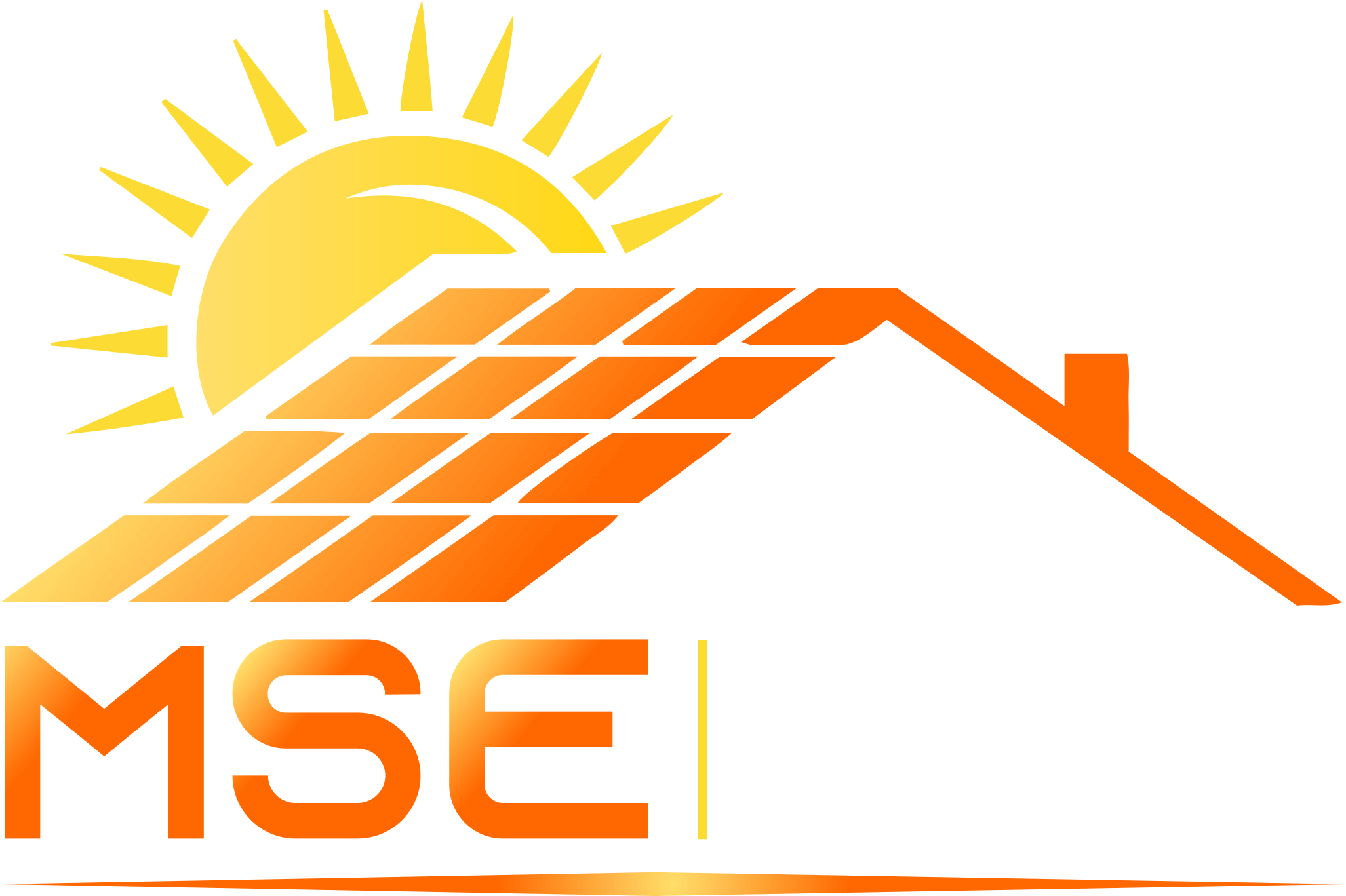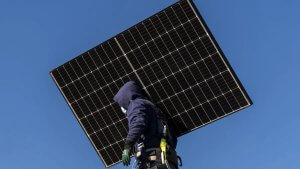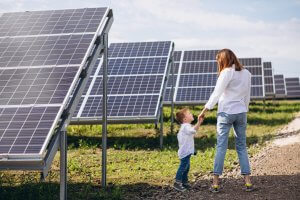
A recent solar product trend is emerging in the solar industry: bifacial solar panels are solar panels that can capture sunlight both on their front and back and may be an interesting new solar solution for certain types of solar installations.
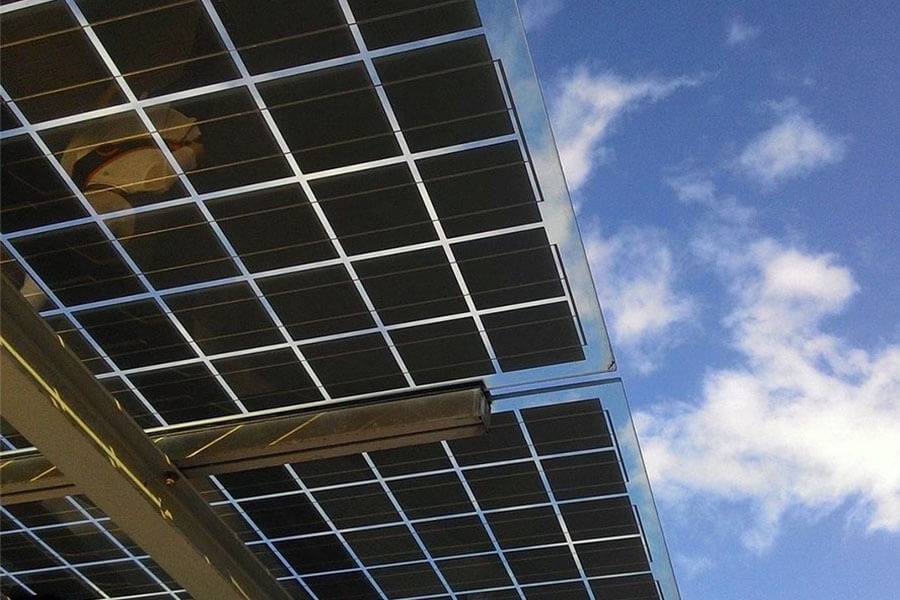
What are bifacial solar panels?
Bifacial solar panels are a new type of solar panel that can generate electricity from both the front and back sides. They are becoming increasingly popular as a way to increase solar power production. In this blog post, we’ll explain what bifacial solar panels are, how they work, and why they are becoming more popular.
One reason bifacial solar panels are becoming more popular is that they can increase solar power production. By generating electricity from both the front and back sides, bifacial solar panels can produce up to 30% more power than traditional monofacial solar panels. This can be a significant increase in power production, especially for large solar power plants.
Another reason bifacial solar panels are becoming more popular is that they are more efficient than traditional monofacial solar panels. Bifacial solar panels can convert more of the sun’s energy into electricity, due to their increased surface area. This makes them a more efficient option for generating solar power.
Bifacial solar panels are also becoming more popular because they are more durable than traditional solar panels. Bifacial solar panels are less likely to break or be damaged than monofacial solar panels, due to their increased strength. This makes them a more reliable option for solar power production.
Overall, bifacial solar panels are becoming more popular due to their increased solar power production, efficiency, and durability.
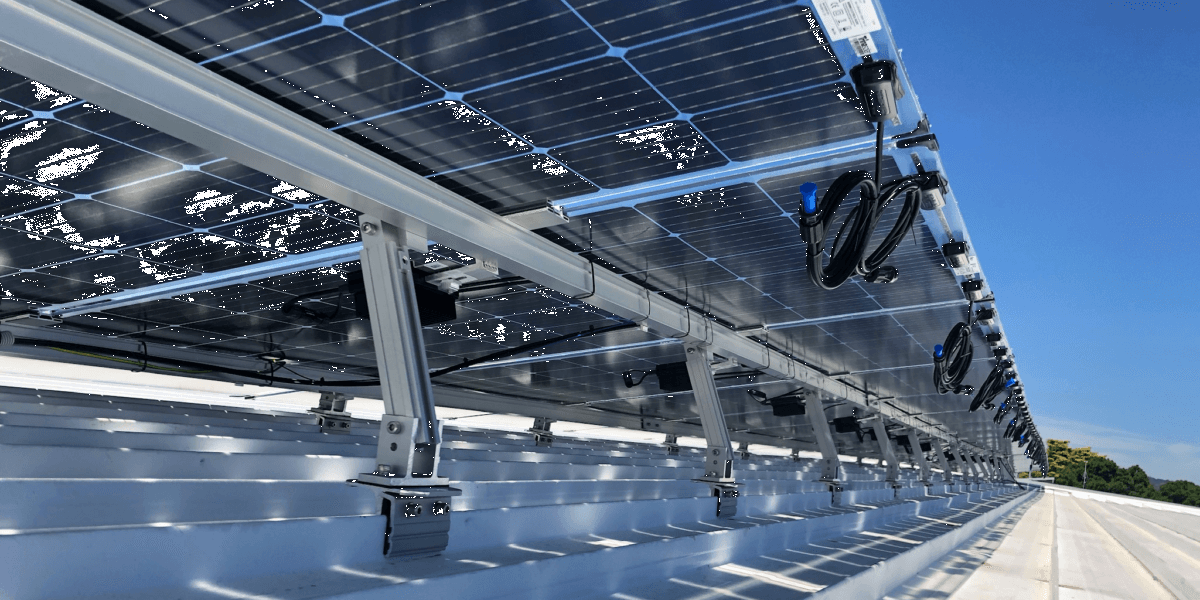
Bifacial vs. monofacial solar panels
The main difference between bifacial and monofacial solar panels is that bifacial panels can generate electricity from both the front and back sides, while monofacial panels can only generate electricity from the front side. Bifacial panels are typically made of thin-film solar cells, which are less efficient than monocrystalline or polycrystalline solar cells. However, they have the advantage of being able to absorb light from both the front and back sides.
How do bifacial solar panels work?
Bifacial solar panels work by absorbing sunlight from both the front and back sides. The front side of the panel absorbs direct sunlight, while the back side of the panel absorbs reflected sunlight. This allows the panel to generate more electricity than a monofacial panel.
Why are bifacial solar panels becoming more popular?
There are several reasons why bifacial solar panels are becoming more popular. First, they are more efficient than monofacial panels. Second, they are less expensive to manufacture. Third, they are easier to install. Fourth, they have a longer lifespan. And fifth, they offer a more aesthetically pleasing appearance.
Bifacial solar panel design
While bifacial solar panels are becoming more popular, there are still some challenges with their design. One challenge is that the panels need to be positioned at a certain angle in order to maximize their electricity production. Another challenge is that the panels need to be placed in an area with a lot of sun exposure. Additionally, the panels need to be cleaned regularly in order to maintain their efficiency. Despite these challenges, bifacial solar panels offer a number of advantages that are making them increasingly popular. These advantages include higher efficiency, lower manufacturing cost, easy installation, long lifespan, and aesthetic appeal.
Top bifacial solar panel manufacturers
The bifacial panel market is still very young and there are not that many manufacturers for this relatively new product. Here is a list of some of top suppliers:
Hyundai Energy Solutions
Hyundai is a large and trustworthy manufacturer of panels and other equipment worldwide. They have an extensive offering of bifacial panels including the GI Series. They have an average power of 2.5-2.7W per cell and around 19% efficiency.
LG Solar Panels
LG Solar panels manufacture some of the highest rated and most efficient solar panels on the market. One of their most popular offerings is the LG NeON2 BiFacial series of panels. They have an average power of 5.6W per cell and 19.5% efficiency.
Jinko Solar
Jinko Solar is known for their low cost offering of solar panels. Their Tiger Bifacial series has an average power of 3W per cell and are 20% efficient on average.
Can you use bifacial solar panels for reside
Yes, bifacial solar panels can be used for residential installations. However, there are a few things to keep in mind. First, the panels need to be positioned at the correct angle in order to maximize electricity production. Second, the panels need to be placed in an area with a lot of sun exposure. And third, the panels need to be cleaned regularly in order to maintain their efficiency.
Tariff exemptions for bifacial solar panels
Bifacial solar panels are currently exempt from tariffs in the United States. This is a significant advantage for businesses and homeowners who are looking to install solar panels. The tariff exemption means that bifacial solar panels can be imported into the country without paying any additional taxes.
Contact Us To Learn More about Bifacial solar Panels
majeski
Leave a Replay



About Majeski
Majeski Solar Is a Solar Installer company, and Top Tier Solar Installer in Washington D.C. , Virginia, and Maryland.
